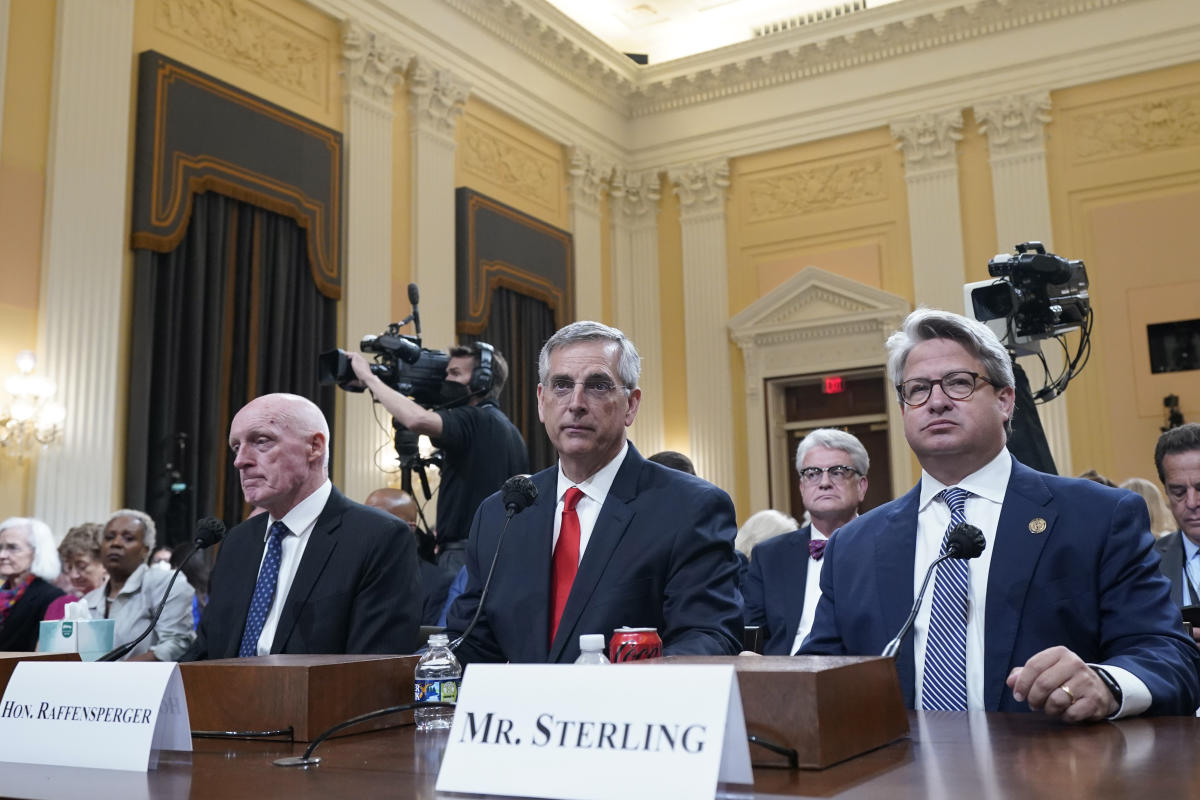In 2023, the rules didn’t apply to many of the year’s biggest success stories.
For the past two decades, superheroes and sequels have dominated at the box office. But in the last year, many of the movie business’ Tiffany franchises had all the appeal of an Old Navy clearance bin, with the likes of Indiana Jones and Ethan Hunt swinging back into action for more high-flying adventures only to be greeted with grosses that were decidedly Earthbound. And cinema’s mightiest heroes, from Ant-Man to Aquaman, were told to hang up their tights and tridents as comic book movies suffered a historic collapse at the box office. Marvel, once seen as the movie business’s most indestructible brand, is asking tough questions about its creative direction, while DC Films has brought in new leadership in James Gunn and Peter Safran and tasked them with undertaking a total reboot.
More from Variety
Those films that did succeed emphasized the fresh over the familiar. “Oppenheimer,” a $100 million-budgeted historical drama about physicist J. Robert Oppenheimer and the creation of the atomic bomb, is the kind of pitch that, on paper, is an insane gamble. That the film, backed by Universal and directed by Christopher Nolan, became an unmitigated box office smash only punctuates this crazy, upside-down year at the box office. For the first time in more than a decade, none of the three biggest movies — Barbie” ($1.44 billion), Universal’s animated “The Super Mario Bros. Movie” ($1.35 billion) and “Oppenheimer” ($951 million) — were part of existing film franchises or inspired by comic books.
“Original content, rather than sequels, ruled the day in 2023,” says Richard Gelfond, the CEO of Imax.
“Oppenheimer” proved that not only will audiences still get excited about new movies, but they’re also willing to cross state and country lines to watch it on the best possible screen. Cinephiles boarded planes, trains and automobiles to witness “Oppenheimer” in Imax 70mm – available on just 30 screens across the world – and experience the movie the way Nolan intended it to be seen.
Of course, “Oppenheimer” is just half of the moviegoing phenomenon that defined 2023 at the box office. The cultural craze of “Barbenheimer,” complete with double features of “Barbie” and “Oppenheimer,” two seemingly different films with matching release dates, helped to fuel not just the largest collective weekend at the box office since the pandemic, but one of the biggest of all time. For a shimmering moment, movies were the dominant art form again, with the twin blockbusters monopolizing the cultural conversation.
“‘Oppenheimer’ and ‘Barbie’ couldn’t be more different, but in basic ways, they were similar because they were compelling stories told in masterful ways,” says Michael O’Leary, president and CEO of the National Association of Theatre Owners (NATO). “You don’t want to make assumptions about your audiences. It’s possible to overthink why people go to the movies. They just want a compelling story with great actors.”
Other original stories also rose to the top by catering to very specific audiences and relying on unorthodox promotional strategies. “Taylor Swift: The Eras Tour” became a must-see event for teen girls, who were encouraged to use their phones and sing and dance in the aisles in a break with “no talking and texting” edicts. Its $250 million global gross makes it the second-biggest concert film of all time. Swift gets to keep the bulk of the profits because she partnered with AMC Theatres to release the film in cinemas instead of working with a traditional studio, which would have charged her a steeper distribution fee.
Released in the height of summer, “Sound of Freedom,” a low-budget drama about a former government agent rescuing child sex trafficking victims, was able to compete against the latest “Mission: Impossible” and “Transformers” films. Released by Utah-based Angel Studios, “Sound of Freedom” relied heavily on faith-based crowds, encouraging audience members to “pay it forward” by buying tickets for others to see the movie. It also used crowdfunding to finance the film’s distribution and marketing.
Those films bypassed legacy Hollywood companies, but some veteran studios also embraced novel approaches to hyping their movies. Universal, for instance, turned the robotic doll at the center of “M3GAN” into a social media queen, hyping the film on TikTok and X, formerly known as Twitter, where the campy villain’s dance moves launched a million memes. The film went on to gross $181 million globally on a $12 million budget. “M3GAN” was one of several horror movies to top charts and rake in profits, joining a list that includes “Five Nights at Freddy’s,” “The Nun “and “Scream VI.” It illustrates that genre’s endurability even as other box office staples faltered.
An industry that became reliant on franchises to sell tickets learned the hard way about too much of a good thing. Big-budget tentpoles like “Indiana Jones and the Dial of Destiny,” “Mission: Impossible – Dead Reckoning Part One” and “The Flash” were primed to be the most successful movies of the year, only to wildly miss box office expectations. Part of the problem is that both the “Indiana Jones” and “Mission: Impossible” movies were saddled with budgets of nearly $300 million, meaning they had to be massive hits, which they weren’t, to turn a profit. To be fair, the rising costs were mostly the unforeseen consequence of a global pandemic that led to shutdowns and pricey safety protocols. However, they were also greenlit when China was a major market for Hollywood movies. Global tensions and the increasing popularity of local language movies in that region have led Chinese audiences to turn away from U.S. movies, scrambling long-standing business models. Add to that the disappearance of Russia as a major source of ticket sales due to the war in Ukraine, and you have a shrinking international marketplace. Privately, studio executives say there is a major push underway to get movie budgets under control.
The attenuated foreign box office means there weren’t as many big movies in 2023. Only two releases, “Barbie” and “The Super Mario Bros. Movie,” crossed the $1 billion mark, whereas nine surpassed that number in 2019, the last pre-COVID year.
“There were a lot of doubles and triples but less home runs,” Gelfond says.
There also weren’t as many at bat. Hollywood studios pumped out fewer and fewer movies — only 88 movies debuted in theaters in 2023 compared to 108 in 2019. It’s a reminder of the lingering effects of COVID, which created a raft of production nightmares. The content crisis won’t be alleviated any time soon. This year’s writers and actors strikes stopped cameras from rolling on major blockbusters for months. That has led to a tangle of scheduling shifts and complications, resulting in movies like “Mission: Impossible 8” and “Captain America: Brave New World,” slated to debut in 2024, getting pushed back into the following year. There’s also the possibility that the movie business will suffer more labor unrest if The International Alliance of Theatrical Stage Employees, which represents below-the-line crew like editors, lighting technicians and makeup artists, decides to hit the picket lines when their contract expires in July.
“When you lose half a year of production, 2024 will be a downturn,” O’Leary says. “We have to be realistic. If any industry lost half a year of production, there would be an impact in the following year. We would have liked to kept momentum of 2023, but it’s temporary. We fully expect the momentum to continue in 2025.”
Greg Laemmle, CEO of Los Angeles-based circuit Laemmle Theaters, says he’s “cautiously optimistic” about 2024. Despite several high-profile vacancies, tentpoles like “Dune: Part Two” and “Despicable Me 4” are expected to draw crowds in a big way. “We’re going to have to deal with the after-effects of the strike” he says. Although business at his theaters has steadily improved since the pandemic, he thinks that Hollywood needs to move away from betting on a handful of mega-blockbusters at the expense of a larger, more fully-rounded slate.
“We need films [that gross in] the $75 million to $175 million range. I would like to see adult comedies and dramas as well,” he said. “A broader range of films will bring people into the movie theater. ‘Air’ was a really good film aimed at the middle-of-the-road audience.”
“Air,” a sports drama designed to appeal to adults, was backed by Amazon, which wasn’t worried about turning a profit on the movie during its theatrical run. The studio wanted to generate buzz around the film before it debuted on the company’s streaming service, Prime Video. Apple deployed a similar strategy with “Killers of the Flower Moon” and “Napoleon,” lavish historical dramas that it released in thousands of screens to raise their profile. Like Amazon, it wants to draw more attention to its streaming service Apple TV+. These deep-pocketed tech and retail giants are moving aggressively into the entertainment space and showing a willingness to back the kinds of auteur-driven movies that major studios have deemed too risky.
In 2023, that risk aversion backfired spectacularly, leaving studios reconsidering their reliance on geriatric film properties and cinematic universes that kept introducing new superhero residents to diminishing returns. Perhaps the last 12 months will serve as one of those transitional moments in Hollywood history, a time where the old paradigms shatter and a period of creative resurgence blossoms in their wreckage. That was certainly the case in the late 1960s when bloated epics and musicals toppled the studio system and ushered in a new era of moviemaking that was bold, ballsy and artist driven. It also happened in the 1990s, as a new generation of auteurs like Quentin Tarantino, Paul Thomas Anderson and Steven Soderbergh emerged to give a flailing film business an indie recharge. Since “Oppenheimer” and “Barbie” were hits, will more directors like Nolan and Greta Gerwig get an opportunity to realize their visions without endless studio interference?
Maybe. But it’s also just as likely that Hollywood will draw the wrong lessons from this shift in popular tastes. Instead, we may be looking at a future marked by an endless parade of toy adaptations and spinoffs, and one in which video games are strip-mined as a source of IP and “Oppenheimer” is viewed as an anomaly, not confirmation that audiences want to see something original. The coming months will provide a hint about which path the movie business decides to take.
Best of Variety
Sign up for Variety’s Newsletter. For the latest news, follow us on Facebook, Twitter, and Instagram.

Laura Davis is an entertainment aficionado who delves into the glitz and glamour of the entertainment industry. From Hollywood to Broadway, she offers readers an insider’s perspective on the world of movies, music, and pop culture.






